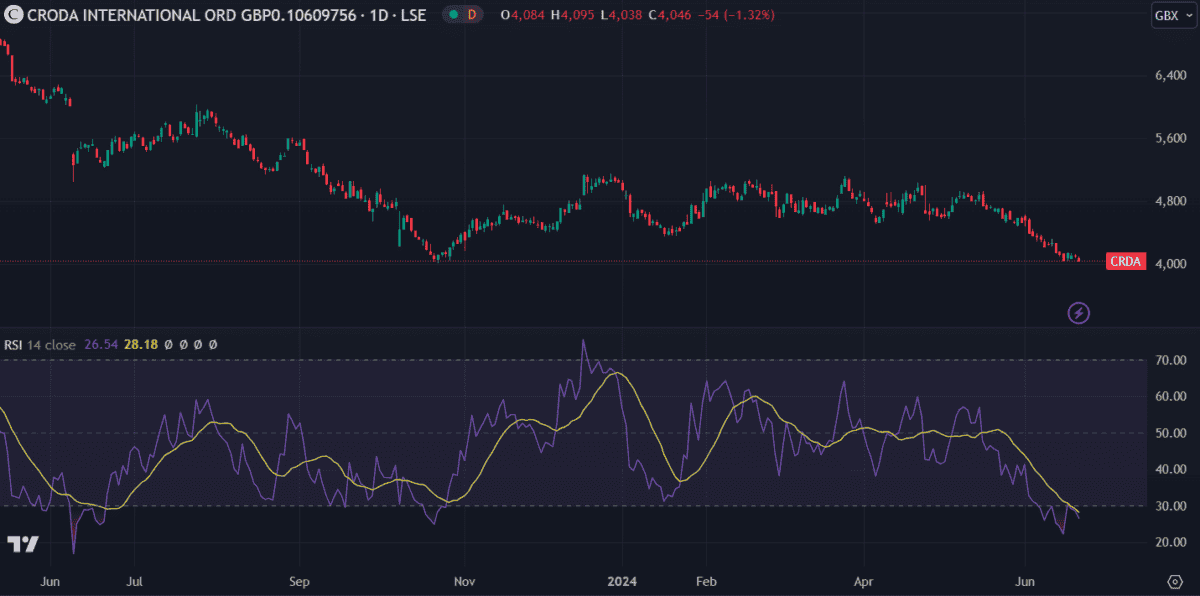As times change and new trends emerge, certain FTSE shares fall in and out of favour. There are many factors that can contribute to this: economic cycles, new technology, and changing consumer habits.
But I find that history has a way of repeating itself. With the economy in recovery, it might once again be time for this long-forgotten stock to shine.
The right chemistry
Croda International (LSE: CRDA) is a chemicals manufacturer, developing everything from pharmaceutical ingredients to textile treatments. It was one of the few companies that enjoyed increased business during Covid, providing lipids for use in Covid vaccines.
As such, its share price skyrocketed by over 100% during 2020. Not that it was doing badly beforehand — in the 10 years before Covid, the price increased 496%. So it’s fair to say business was good.
And then it all came crashing down. Since hitting a high above £100 in December 2021, the share price is down 60% to the current £40 level.
So what happened?
It seems that the Covid panic-buying didn’t extend to just toilet paper. Companies fearing the worst stocked up on way too many chemicals. Subsequently, Croda experienced a huge drop in sales once lockdowns ended and life returned to normal.
In its 2023 full-year results, the firm revealed sales were down 11%, leading to a 33% fall in adjusted profits before tax. CEO Steve Foots noted that the performance “reflects the prolonged destocking and weaker macro environment that has followed two record years post the pandemic“. But he went on to praise the company’s strong balance sheet and improved cash flow, saying it’s “well positioned to take advantage of the demand recovery when it occurs”.
And I think he’s right.
When considering price recovery, I like to check a stock’s relative strength index (RSI). When this lagging indicator drops below 30 for extended periods, it can sometimes pre-empt a price reversal. Croda’s daily RSI has been below 30 for most of June – the only time this year it’s been below 30. When it dropped below 30 for a few days last October, the price gained 20% in the following months.

But it’s no guarantee. In January 2022 it was below 30 for most of the month and the price continued to fall through February and March. The £40 price level is significant, though. In April 2020, the share price recovered after touching this level and again in October of 2023. There’s no guarantee it will happen again but if a recovery is on the cards, I think it has a better chance of starting here.
There are other positive signs, too.
Based on future cash flow estimates, there’s a good consensus among analysts that the stock is trading at 75% below its fair price. As such, they expect on average a 22% increase from current levels.
That relies on demand increasing. Stockpiles may be decreasing but barring another pandemic, it’s unlikely demand will return to 2021 highs. The current downward momentum may drag out, providing several good opportunities to buy the shares at a cheap price — possibly even lower than now.
But a lot lower? I doubt it. So rather than miss my chance, I plan to buy the shares once July payday rolls around.






